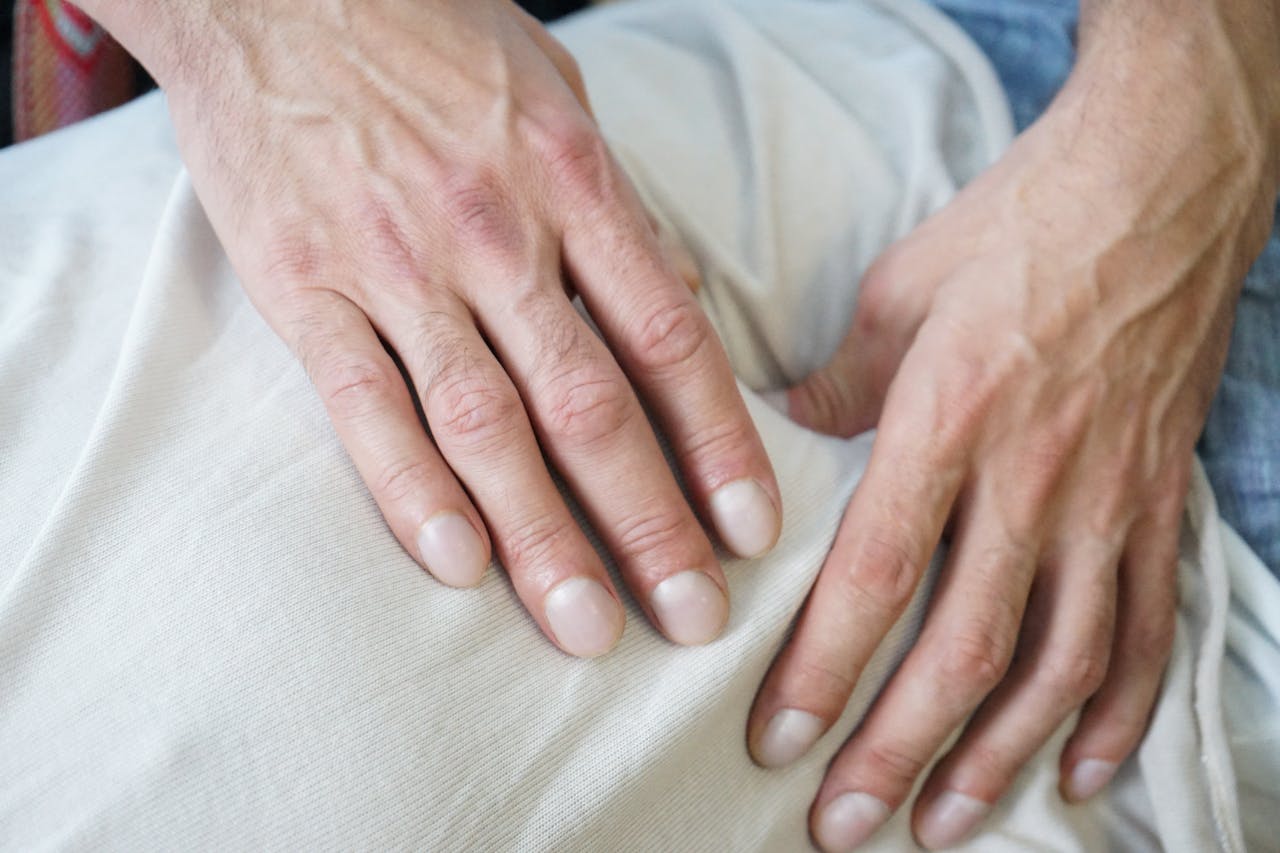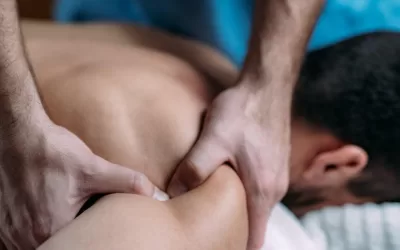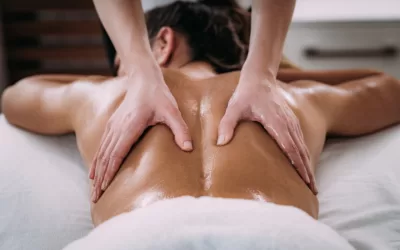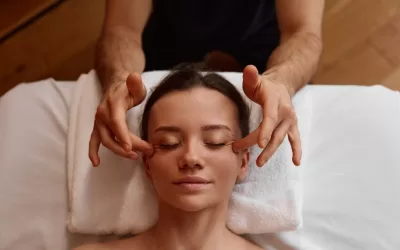Preparing for your first Structural Integration session can seem daunting, especially for chronic pain patients seeking relief. However, with the right tips and guidance, you can ease into this transformative experience seamlessly. Contrary to traditional methods, Structural Integration focuses on aligning your body by manipulating its connective tissues, offering a holistic approach to pain management.
Whether you’re apprehensive or eager about your upcoming session, these practical strategies will help you navigate the process effectively. From understanding what to expect during the session to post-treatment self-care routines, we’ve got you covered. Embrace this opportunity to embark on a journey towards reduced pain and improved well-being through Structural Integration.
Preparing For Your Session
Health History
Before your first Structural Integration session, it’s crucial to share your health history and chronic pain concerns with the practitioner. This information helps them tailor the process to suit your specific needs, ensuring a personalized experience.
Discuss any previous injuries, surgeries, or conditions that might impact your session. The more detailed you are about your posture issues or areas of discomfort, the better the Rolfer can address them during the journey to alleviate pain effectively.
Comfortable Attire
Choosing the right clothing is essential for a successful Structural Integration session. Opt for comfortable, loose-fitting attire that allows easy movement. This ensures that the Rolfer can assess your structure and movements accurately without any restrictions posed by tight clothing.
Wearing loose clothes not only facilitates the Structural Integration process but also enhances your overall comfort during the time spent at the table. It’s all about creating an environment where you can fully engage in the healing form, promoting relaxation and optimal results.
Setting Intentions
To make the most of your first Structural Integration session, take a moment to relax and set positive intentions beforehand. Visualize how this experience will bring positive change to your body and mind, helping alleviate chronic pain and improve overall well-being.
First Session Insights
Physical Assessment
During your first rolfing session, expect a thorough physical assessment to evaluate your posture and identify areas of tension. The practitioner will analyze how your body moves and functions to tailor the treatment to your specific needs. This assessment helps in creating a personalized plan to address your chronic pain issues effectively.
Hands-On Manipulation
One of the key aspects of the initial rolfing session is the hands-on manipulation of soft tissues. Through gentle pressure and manipulation techniques, the practitioner works on releasing tension and realigning your body. This process aims to improve your body’s overall balance and alleviate chronic pain symptoms gradually.
Personalized Adjustments
Throughout the session, it is essential to provide feedback to the practitioner. By communicating any discomfort or areas of particular sensitivity, you enable them to make personalized adjustments to the treatment. This feedback loop ensures that the rolfing session is tailored to your comfort level and targets the root cause of your chronic pain effectively.
Initial Consultation Explained
Gathering Information
During the initial consultation for your first Structural Integration session, the Rolfer will focus on understanding your chronic pain issues. They gather vital information about your medical history, previous treatments, and specific areas of discomfort. This step is crucial as it lays the groundwork for tailoring the sessions to address your unique needs.
The Rolfer will delve into the details of your TMJ disorder, exploring the intensity of your pain, any triggers that worsen it, and how it impacts your daily life. By gaining a comprehensive understanding of your condition, they can develop a personalized treatment plan to alleviate your symptoms effectively.
Setting The Foundation
Your goals for seeking Structural Integration play a significant role in shaping the initial consultation. Whether you aim to reduce pain, improve mobility, or enhance overall well-being, communicating these objectives during the consultation is essential. The Rolfer will use this information to create a roadmap for your sessions, ensuring that each one is geared towards achieving tangible results.
Pros:
- A personalized approach tailored to individual needs.
- Comprehensive assessment helps in creating an effective treatment plan.
Cons:
- Requires open communication about chronic pain experiences.
- May involve discussing sensitive topics related to pain triggers and limitations.
The initial consultation not only serves as an opportunity for you to share your chronic pain experiences but also allows the Rolfer to establish a connection with you. Building trust and rapport from the outset is crucial for fostering a supportive environment where you feel comfortable expressing your concerns and preferences.
Establishing Trust And Rapport
Physical Assessment Overview
Posture Evaluation
During a rolfing session, the physical assessment plays a crucial role in understanding the client’s physical body. It involves evaluating posture and alignment to identify any deviations or imbalances. The Rolfer assesses how the client stands, walks, and moves to pinpoint areas of concern.
Tension Detection for TMJ Disorder
One key aspect of the assessment is identifying areas of tension that may contribute to conditions like Temporomandibular Joint (TMJ) disorder. By palpating the muscles around the jaw and neck, Rolfers can detect tightness or restrictions that could be exacerbating chronic pain. This information guides them in customizing the session to address these specific issues effectively.
Guiding Treatment Approach
The physical assessment serves as a roadmap for Rolfers, guiding them on how to approach each session. By pinpointing areas of tension, postural misalignments, and movement patterns, they can tailor the treatment plan to suit the client’s unique needs. This personalized approach ensures that the session targets the root causes of chronic pain, promoting long-lasting relief.
Hands-On Work Sensations
Sensations
During your first rolfing session, you will experience the skilled touch of the practitioner as they work on your soft tissues. This hands-on manipulation is designed to release tension and promote relaxation.
The massage techniques used in rolfing can vary from gentle strokes to deep tissue pressure, depending on your comfort level and needs. As the therapist’s hands move across your body, you may feel a sense of warmth and heightened awareness in areas of tension.
Alignment And Discomfort
The primary goal of the hands-on work in rolfing is to improve alignment and reduce discomfort in the body. By targeting specific areas of strain and stress, the practitioner aims to release tight muscles and restore balance to your soft tissues.
As the session progresses, you may notice changes in how your body feels, such as a soft glow or a sense of lightness. These sensations are indicators that the body’s patterns are shifting and releasing stored tension.
Energy Flow
Structural Integration focuses on treating the body as a whole, addressing not just physical symptoms but also energetic imbalances. The hands-on work during the session helps to promote the flow of energy throughout the body, enhancing overall well-being.
Emphasizing Client Focus
Understanding Clients
Rolfers prioritizes embracing the unique needs of their clients to provide personalized sessions. They delve into each client’s history, goals, and purpose for seeking Structural Integration.
Adapting Techniques Techniques in Structural Integration are tailored to meet the specific requirements of each individual. By understanding the client’s condition thoroughly, Rolfers can adjust their methods accordingly.
Enhancing Effectiveness
The client-centered approach in Structural Integration significantly boosts the effectiveness of the session. By focusing on the client’s experience and feedback, Rolfers ensures a more impactful and beneficial outcome.
- Tailored techniques for individual needs
- Personalized sessions based on client history and goals
Feedback And Movement Integration
Feedback
During a Structural Integration session, providing feedback is crucial for the therapist to adjust techniques effectively. This open communication helps tailor the session to address specific movement patterns and areas of discomfort.
Feedback can range from describing sensations during manipulation to expressing pain levels. By actively participating in this process, clients empower themselves and enhance the overall session experience.
Movement Integration
Understanding how movement exercises complement Structural Integration is essential for reinforcing structural changes. These exercises target motion development, aiding in restoring proper alignment, balance, and function.
Incorporating movement into sessions helps clients maintain the benefits of Structural Integration between appointments. Therapists may recommend simple exercises tailored to individual needs, promoting ongoing progress and long-term relief.
Holistic Approach
Feedback and movement integration play pivotal roles in adopting a holistic approach to addressing chronic pain. By combining hands-on techniques with active client involvement, therapists can create a comprehensive treatment plan.
This holistic approach considers not only physical symptoms but also factors like emotional well-being and lifestyle habits. It emphasizes the interconnectedness of the body systems and aims to promote overall health and wellness.
Structural Integration Series And Pain Management
Structural Integration Ten Series
RolfinMassagege consists of the Structural Integration Ten Series, a structured program that focuses on chronic pain patients. This series is designed to address postural imbalances through systematic manipulation of the body’s connective tissues.
Each session in the Structural Integration Ten Series targets specific areas of the body, gradually working towards overall structural alignment. By targeting different regions in each session, rolfing sessions aim to release tension in connective tissues and improve posture over time.
Progressively Releasing Tension
Throughout the rolfing session, practitioners use hands-on manipulation to realign and balance the body. The gradual approach allows for deep tissue work, helping to release long-held tension patterns within the connective tissues.
By focusing on releasing tension progressively, rolfing aims to create lasting changes in the body’s structure. This process can lead to improved mobility, reduced pain, and enhanced overall well-being for individuals dealing with chronic pain issues.
Empowering Pain Management
One of the core principles of rolfing is empowering clients to take an active role in managing their pain. Through increased awareness of their body’s movements and sensations, clients can learn how to make conscious choices that support pain relief and improved function.
Benefits Beyond Pain Relief
Improved Body Awareness
Enhanced body awareness is a key benefit of Structural Integration. Clients often experience a deeper connection to their bodies, noticing subtle changes in movement and posture. This heightened awareness can lead to better self-care habits.
Structural Integration sessions focus on manipulating the connective tissue in the body, which can result in improved alignment and balance. By addressing imbalances, clients may find relief from chronic pain and discomfort.
Stress Reduction And Overall Well-being
Structural Integration can also provide stress reduction benefits beyond pain relief. The hands-on manipulation techniques used in Structural Integration sessions can help release tension stored in the body, promoting relaxation and a sense of well-being.
Clients often report feeling more relaxed and centered after a Structural Integration session. This reduction in stress levels can have a positive impact on overall health, contributing to improved sleep quality and enhanced mental clarity.
Long-Term Symptom Relief And Enhanced Posture
One of the significant advantages of Structural Integration is the potential for long–term symptom relief. By addressing structural imbalances in the body, Structural Integration aims to create lasting improvements in posture and movement patterns.
Over time, clients may notice reduced pain levels, increased flexibility, and greater ease of movement. These changes can lead to enhanced overall physical function and a higher quality of life.
Conclusion
You’ve gained valuable insights into preparing for your first Structural Integration session, understanding the process, and the potential benefits it holds for chronic pain management. By focusing on client-centered care, feedback integration, and movement awareness, you are equipped to embark on a transformative journey toward holistic pain relief and improved well-being. Remember, each session builds upon the last, fostering a deeper connection between mind and body while addressing long-standing issues. Embrace this opportunity to prioritize your health and take proactive steps towards a pain-free life through the power of Structural Integration.
Alleviate Chronic Pain With Structural Integration: Discover MedicinEvolution’s Innovative Approach For Long-Term Relief!
Are you or someone you care about battling chronic pain? MedicinEvolution is pioneering the use of Structural Integration for profound structural integration and pain management, providing a novel path to enduring relief and improved physical alignment. By harnessing the transformative power of Structural Integration, MedicinEvolution targets the deep-seated causes of chronic pain, initiating a holistic recovery process. Experience the freedom from ongoing discomforts such as jaw pain, difficulty in chewing, and uneven facial muscle tension—MedicinEvolution customizes its Structural Integration techniques to meet your specific needs, guiding you toward significant pain reduction and enhanced functionality. Their tailored Structural Integration sessions help you overcome the limitations imposed by chronic pain, unlocking your body’s full potential for movement and comfort.
If chronic pain has been limiting your mobility, or affecting your daily life, or if you’re seeking a sustainable approach to manage your symptoms, MedicinEvolution’s cutting-edge strategy that combines Structural Integration with specialized pain management techniques is your solution. Don’t allow chronic pain to set the limits of your physical health—act now and schedule your consultation with MedicinEvolution today! Begin your journey to recovery with their Structural Integration-focused treatments and progress towards a life of harmony, free from pain, and with a body that functions smoothly and comfortably. Witness the incredible transformation as your body escapes the grip of chronic pain!





